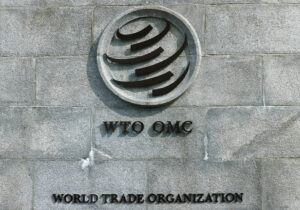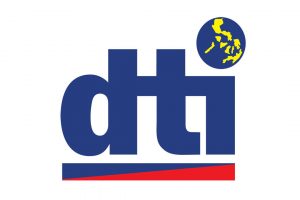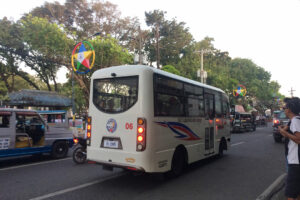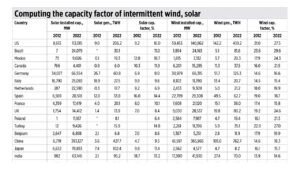Tech industry eyes more products under WTO’s zero-tariff framework

By Norman P. Aquino, Special Reports Editor
GENEVA — The technology industries of dozens of countries including the Philippines are lobbying to bring more than 400 technology products under the World Trade Organization’s (WTO) tariff-eliminating framework, which is expected to add almost $766 billion to the global economy over 10 years.
The global semiconductor and supply chain would be helped by an Information Technology Agreement 3 (ITA-3), which will also play a critical role in driving global sustainability across industries, Philippine Representative to the WTO Manuel Antonio J. Teehankee told a public forum at the WTO headquarters last week.
“We know the benefits,” he told the forum attended by policy makers and representatives from various semiconductor companies worldwide, citing $49 billion worth of Philippine electronic exports in 2022, representing 36% growth over five years and accounting for almost 50% of the country’s exports.
The Philippine electronics sector, including semiconductors, generated three million direct and indirect jobs that year, Mr. Teehankee said. “I have instructions from the capital, and I am convinced [about ITA-3].”
ICT merchandise exports account for 39% of Vietnam’s, 32% of Malaysia’s, 29.2% of South Korea’s, 25.5% of China’s and 16.1% of Thailand’s total exports.
In contrast, ICT goods exports account for a much lower and incredibly meager share of goods exports for non-ITA countries, including for just 2.5% of Cambodia’s goods exports, 0.7% of South Africa’s and less than half a percent each for Brazil, Chile, Pakistan and Argentina.
Twenty-nine countries signed the ITA at the Singapore Ministerial Conference in December 1996. The participants committed to completely eliminate tariffs on eight broad categories of IT products such as semiconductors, computers and telecommunication equipment.
At the Nairobi Ministerial Conference in December 2015, more than 50 member nations concluded the expansion of the agreement, which now covers 201 more products valued at more than $1.3 trillion a year. Members have since grown to 82, representing about 97% of world trade in IT products, according to the WTO website.
Expanding the ITA for the second time could bring products such as 3D printers, industrial robots, commercial-use drones, patient-monitoring systems and other medical devices, lithium-ion batteries, solar cells and high-definition TVs into the agreement.
If the 82 signatories of the original ITA were to join an expanded ITA-3, the global economy could cumulatively rise by almost $766 billion over 10 years, the Information Technology and Innovation Foundation (ITIF), a global think tank, said in a study released last week.
Beyond merchandise trade, a similar story plays out in information and communications technology services, Mr. Teehankee told BusinessWorld on the sidelines of the forum.
“Expanding the agreement could expand our exports because it will increase products [with zero tariffs] and it will have a knockdown effect on our IT-enabled service exports and a multiple knockdown effect on the environment and agriculture,” he said.
The Philippines’ IT-enabled service exports reached $32.5 billion in 2022 and has grown by 10% year on year on the average, he pointed out.
“From an economic viewpoint, development viewpoint and environmental viewpoint, it is an impressive number for developing countries like the Philippines and our ASEAN (Association of Southeast Asian Nations) colleagues and our community of developing countries to take into account,” the Philippine ambassador said.
“The WTO agreement alongside complementary regional agreements have helped spur significant trade and job growth in the Philippines,” Mr. Teehankee said.
Aside from powering consumer goods, semiconductors also play a crucial role in addressing global climate change. Multiple industries including transportation, manufacturing, construction and agriculture rely on semiconductors to enable energy-efficient or clean energy production, which in turn reduces emissions.
‘TIME TO MOVE’Global IT product exports increased from $550 million under the original ITA agreement in 1996 to $2.5 trillion in 2021 under the expanded ITA-2 signed in 2015, he added.
Almost three-quarters of these IT product exports were concentrated in Asia, where many countries were participants of ITA-1 and ITA-2 and signatories of various free trade agreements such as ASEAN+ and the Regional Comprehensive Economic Partnership, Mr. Teehankee said.
In absolute terms, the United States would be the biggest beneficiary of ITA-3, followed by China, according to the ITIF study. ITA-3 expansion would be poised to deliver a cumulative $208 billion in US GDP growth over 10 years, 0.82% greater US GDP growth than would otherwise be expected.
Moreover, ITA-3 expansion would increase US exports of ICT products by $2.8 billion, boost revenues of US ICT companies by $6.9 billion and support the creation of almost 60,000 US jobs.
China’s economy would cumulatively grow by 0.52% to be about $147 billion greater than would otherwise be the case as a result of ITA-3 expansion.
The economic growth generated by an ITA-3 expansion would produce tax income that, for at least 12 study countries and the European Union, would well exceed tariff revenues forgone, and for four more countries would fill more than 50% of the revenue gaps 10 years post ITA-3 accession, the ITIF said.
Mr. Teehankee said there are no estimates yet for the Philippines in terms of revenue from ITA-3, adding that stakeholders are in a “scoping exercise” for products that should be included in the deal.
“ITA-3 has not taken off yet,” he said. “It’s private sector-led and it’s demand-driven. It’s just the beginning of the conversation. The private sectors have to push their governments.”
“For countries contemplating participation in ITA-1, ITA-2, ITA-3, or all three, the time to move is now, as major economies are looking to diversify their sourcing and supply chains in order to promote greater supply chain resilience, security and sustainability,” the ITIF said in the study.
“As a result, large technology and industrial companies are taking a fresh look at potential suppliers and locations for production and assembly, creating an opportunity for new suppliers and economies to break into technology global value chains,” it added.
In contrast, countries declining to join ITA-1 and ITA-2 or neglecting to participate in an ITA-3 risk experiencing a technologically deficient economy, reduced productivity and exclusion from global technology supply chains, the think tank said.
Nonparticipation in the ITA also limits an economy’s ability to partake in the expanding universe of industrial products that incorporate semiconductors and other advanced technologies, it said.
“Ultimately, refraining from ITA participation reduces countries’ wage growth and opportunity because a technologically deficient workforce cannot be in a position to participate effectively in the advanced global technology supply chains that pay higher wages and demand greater technology training and skills,” it added.




